|
Trigger warning: This essay mentions pregnancy loss. We are so honored to host author Saira Mir on our blog today. She talks about her experience as an OBGYN, pregnancy loss and her upcoming picture book, Always Sisters. Hard Stories Can Be the Easiest to Write By: Sara Mir 2019 was primed to be an epic year. My debut picture book was going to be released and I had joined a bustling new practice as a full-time OBGYN. The office was growing, along with my waistline as I inched toward my 20th week of pregnancy. A little girl named Nura was set to join our family. Juggling many roles was challenging, but my heart and hands were content being full. My debut picture book, Muslim Girls Rise, is a biographical compilation of contemporary Muslimahs who faced unimaginable challenges and still rose. I was eager for the book to hit shelves and celebrate these inspiring women who defined resilience. The irony is that before the book released, I’d face my own trauma and instead of rising, I fell and stayed down. In early 2019, writing came to a screeching halt, as did my career as an OBGYN. I chose to end my wanted pregnancy at 20 weeks for a severe anomaly that had rendered my girl’s little chance of survival and an even smaller chance of a life without suffering. Saying goodbye to Nura was a mercy, but one that broke me. The complexity of caring for women after I suffered my own traumatic pregnancy loss was too much to bear. I hung up my white coat for an undetermined period of time. For the first time in my life, I was completely lost. The only emotion I felt was pain - deep, searing, soul-crushing pain. The conflict I felt for creating strong women while I was curled up in my bed avoiding social contact while nursing an empty womb added a layer of shame. Years of grief and guilt later, I’d realize my definition of resilience was flawed. It doesn’t mean resisting falling. True strength is accepting the pain of loss. It is choosing to grow in compassion and kindness and empathy from each brush of grief. After we buried Nura, I held my eldest child and watched her confusion as she mourned the loss of a baby sister she’d eagerly anticipated. A sister she met only once in the hospital, to say hello and goodbye. It wasn’t just the loss of a sibling, but of an entire family we had built in our hearts. A select few friends and family surrounded us with comfort. Most shied away out of discomfort or uncertainty. What does one say when a baby dies? The deafening silence made me determined to break it. If not for myself, then for other children like my daughter whose grief was more heartbreaking than my own.
Pouring our family’s story into Always Sisters was therapeutic. I honored the beauty that goes into loving someone you’ve never met. I sorted through our stages of grief, confusion, and loneliness. I broke our emotions down into words a child can relate to - simple, but powerful carriers of loss. I intended to write this book for others, but it gave me the greatest gift of working through my tragedy. As Always Sisters nears release, it feels like a full circle moment after years of hurting, healing, and hoping. In the book, the main character Raya learns that grief is love without a place to go. When that love is shared, the pain lessens. I mourned during my debut book release, but now I will celebrate and honor Nura with all the love that has been trapped inside for four years. About: Saira Mir is a physician and author of the award-winning picture book Muslim Girls Rise, which she wrote for her daughter and other children to have Muslim feminist role models. As an OB-GYN, she has cared for many families through pregnancy loss, but could not find the book she needed to help support her daughter through grief over her own family’s loss, which inspired her to write Always Sisters. She lives in the DC area with her kids and is always on the hunt for the next best playground and bubble tea. Instagram @sairamirbooks www.sairamir.com About the book: This much-needed picture book about navigating the difficult experience of pregnancy loss meets young readers at their level to offer a tender look at grieving someone who never entered the world. Raya can’t wait for her baby sister to arrive. She’s already got a name—Nura—and Raya is certain they’ll be best friends. She’s got all kinds of plans for things they’ll do together like run through the sprinklers, play dress-up, and give piggyback rides. But one day, Mama returns from the doctor with tears in her eyes. Nura won’t be coming home after all. Raya feels confused and sad, like all the love she has for Nura is trapped inside her. With the help of family, friends, and her school counselor, though, Raya finds a way to grieve this loss and to share the love she’ll always feel for her sister. Links to purchase: https://www.simonandschuster.com/books/Always-Sisters/Saira-Mir/9781665901567 Head shot photo credit: Sosan Akhtar Why Not Me?
A Diverse Author’s Fight Against Self-Doubt In my case, writing books wasn’t something I thought I could ever do. Growing up in Canada, I spent countless hours surrounded by books in my local library. But my future turned out to be studying and graduating with a bachelor’s degree in accounting years later. Not your typical path to becoming a traditionally-published author. Motherhood changed everything for me. Of course, I wanted to pass down my love of reading. Going to the library, especially during summer breaks, was usually met with cheers. It wasn’t until one of my kids asked why the library had no children’s stories featuring Black American Muslim main characters that everything shifted. I didn’t have an explanation. In 2012, my new year’s resolution was to complete a first draft of an idea I had for a novel. It was a middle grade fantasy and took me nine months to complete. And it was terrible. I didn’t know anything about character development or world building. So, I didn’t do any of it. Fortunately, my take away was that I could actually finish a manuscript draft. And Alhamdulilah, that’s what stuck with me. At this point, ignoring my lingering self-doubt allowed me to push forward. I approached learning the craft of writing like a job. I took classes, attended a few conferences, and joined a writing group. By 2017, I had amassed a three picture book series and a coming-of-age young adult manuscript that were all well received but still didn’t result in any agent offers of representation. My self-doubt awoke and was my constant companion, whispering to me to give up on the dream of traditional publishing. Maybe the YA stories I wanted to tell featuring Black American Muslim teens would never find publishing professionals that believed in them. Maybe all the time I spent learning this new skill was just a huge waste of time. Random passive aggressive comments from one or two fellow authors made it worse. But my family, my faith, and my writing friends all encouraged me to keep going. The result was my second, contemporary young adult manuscript. It was 2018 and I paid a sensitivity reader to give me an honest critique of this project. Based on the feedback, I took the bold step to rewrite the entire thing. Staring at a blank screen was terrifying but I did it anyway. This process took me into 2019 but I had a much better manuscript. After six months of revising, I steeled myself and dipped a toe into the query trenches. I pitched this new Contemporary YA project in the Oct 2019 DVpit and the Dec 2019 PitMad. My Tweet was very popular at both events—and got the attention of my now agent, Kristina Perez. By February 2020, I had signed with Kristina. Next, came my manuscript revisions. For exactly 365 days, my self-doubt was well fed. I fought the negativity inside my head and persevered. My manuscript was on submission from Feb. 2021 to Dec. 14, 2021. During that time, I distracted myself but many times my thoughts turned sour. An email on Wed, Dec. 15th surprised me. It was an offer from an actual editor. After several conversations with my agent, to keep this secret and my sanity, I started a submission journal. Whenever my self-doubt overwhelmed me, I’d jot it down. Every irrational fear and crazy thought filled the pages. In early 2022, after the two-book deal contract was negotiated and then landed in my email, I wrote this last entry in the journal. “InshaALLAH, my imposter syndrome will go away for a while and I can and will enjoy this moment.” As I work on other manuscripts, that personal goal of mine is still a work-in-progress. Khadijah VanBrakle Author of FATIMA TATE TAKES THE CAKE, her debut Contemporary YA novel is out now. A second YA novel is due out in 2024, both from Holiday House. Website: https://www.khadijahvanbrakle.com/ Twitter: https://twitter.com/LVanBrakle Instagram: https://www.instagram.com/khadijahvanbrakle/ Headshot photo credit: Khadija Chudnoff Website: https://www.khadijahvanbrakle.com/ Twitter: https://twitter.com/LVanBrakle Instagram: https://www.instagram.com/khadijahvanbrakle/ KidLit in Color author Gabriele Davis is pleased to reveal the cover for her debut picture book, PEACHES, published by Abrams and illustrated by Kim Holt. It will release in May 2024. PEACHES is a lyrical, intergenerational story inspired by Gabriele’s father and his love of homemade peach cobbler. It narrates a milestone moment in a young girl’s life as she assumes a poignant family tradition. It celebrates joy, perseverance and how those we love live on in us. Gabriele feels lucky to have been perfectly matched with artist Kim Holt, who skillfully conveys these themes as well as the loving bonds between family members in this story. Here, Gabriele chats with Kim about her illustrations. I am delighted with your gorgeous illustrations for PEACHES. They are so full of warmth and heart! What inspired your artistic approach to this book? KH: When PEACHES was presented to me, I immediately said yes! I had randomly done some sketches the year before of my grandmother and me baking and wanted to do art around that relationship. I stored those ideas away, and when this came up, I used them as a starter guide for my sketches and reflected on my relationship with my grandmother when illustrating the story. I love using lots of color in art. In reading the story of PEACHES, I wanted the characters to stand out with pops of color. The peaches themselves are a central character, so I chose colors that were more complementary to each other. I wanted everyone to be able to stand alone in a scene and complement each other when they were together. Did you have to do any visual research? KH: I always do extensive research for each book. Even though I have baked pies, I spent a lot of time researching techniques for making peach pies and cobblers. I wanted to see the process, what counters look like, and the arrangement of ingredients. I also wanted to see the differences in approach between adult and child baking. Is there anything in particular about this story that resonated with you? KH: This story touched me deeply because I spent so much time with my grandmother, Vivian Garnes, and, for a time, lived with my grandparents. She gave me my foundation for cooking and my love for others. She taught me how to make my first pie from scratch, so the memories were there. Food can express love, especially when you take the time to prepare someone their favorite dish. Anyone who knows me can tell you I love food, recipes, cooking, and peach cobbler :). What do you hope children take away from your drawings? KH: I hope children will relate and see themselves in the moments captured. I hope they notice the details and spend time with each page looking for more. Thanks for putting your heart into this book, Kim! Can you share what’s coming up next for you? KH: The books I illustrated that are coming out are Justice Ketanji: The Story of Supreme Court Justice Ketanji Brown Jackson and The Bronx Is My Home. KIM’S BIO: I am fascinated by capturing moments in time. In particular, I love painting special moments of joy, wonder, and quiet struggles and hearing the conversations and memories they stimulate for people of all ages. I am a painter and illustrator who strives to capture these moments in my artwork, and whether young or old, I want people to see themselves. I have had a passion for art and drawing from an early age and found great inspiration growing up directly across from the Brooklyn Museum. I have a BBA in Marketing from Howard University and a BFA in Animation from the Academy of Art University. My passion is creating energetic, expressive work full of personality, typically incorporating a vibrant and fresh color palette. I make art and live in the Washington D.C. metro area with my husband and two dogs, Sugar and Spice. See more of my work online at: www.kimscollectionofstuff.com IG: @kimholt As a child, Gabriele longed to see families like hers reflected in the books she read. Now she gets to make that happen for other underrepresented readers. Gabriele holds an MA in magazine journalism and has worked as a children's magazine editor and freelance writer. She lives in the Northwest Hills of Connecticut where she tutors, teaches yoga, bikes and writes. She enjoys creating works that inspire children to laugh, love, discover their inner strength, and feel seen. Peaches, releasing in May 2024, is Gabriele's debut picture book. Her second picture book, Our Joyful Noise, will follow in Fall 2024.
Learn more about Gabriele and her books at www.gabrieledavis.com. Twitter: @GDavisBooks Instagram: @iamgabrieled In the fall of 2021, I learned that my debut picture book, The Arabic Quilt was on a banned book list at Central York District. It was taken off of shelves and children were not allowed to read them. The book that took years to write and find a publisher. The book I was receiving dozens of emails and messages about how kids’ eyes lit up when they saw an Arab or Muslim character on the cover. The book that I had stayed hours at the library to research. The book I devoted a lot of time to learning about the publishing industry for. The book I met up with critique partners for, and stayed up late to revise and edit, long after I had put my young kids to bed. The book that was published right before the pandemic hit in early 2020. Some people say I’m lucky that the book is now a banned book because of the attention it would get. But I disagree; there are only a few picture books by Arab Muslim American authors. For a period of time, students weren’t able to check out The Arabic Quilt from their libraries, and this picture book could have been the only book with a positive portrayal of an Arab Muslim. The censorship and ban were upsetting and another hurdle as an author of color. It’s a privilege not to have to worry about whether or not your book will be banned because of who the characters of the book are and the theme of the book. The book ban reminded me why I was so adamant, and so persistent about publishing The Arabic Quilt in the first place. Navigating the world as a Muslim and an Arab is challenging in its own right but these challenges are multiplied further in the world of publishing, something I believe many BIPOC authors can relate to. Fortunately, the ban against my book was also lifted shortly after thanks to student protests at the district and an outcry from around the country. Around the same time, my editor emailed me telling me two districts, one in New York and one in Pennsylvania purchased a total of 22,000 books as part of their school curriculum. I was reminded that our stories are needed, despite other districts banning them. He asked me if I’d be interested in writing another book for them and of course I was interested.
It took me some time to think what topic I’d write. I brainstormed with my author friends and went to the library, of course. Then something hit me, The Arabic Quilt is loosely based on true events growing up, so why not write another book that’s also loosely based on true events, this time as an adult: when my debut book was banned. Having Kanzi as the main character again would be even more powerful so I kept her and all of her classmates. I also decided to bring her Teita to the U.S. on a visit to encourage her to use her voice, relating protests to the famous Egyptian revolution in 2011. I was really excited that Anait Smeridzhyan was available to illustrate again and she did an incredible job again with illustrations. This book has a serious tone to it because books continue to be banned across the country, and it’s based on true events, as I write more details about it in the author’s notes. But it’s also a book filled with hope, love, supportive friends and community. I hope children of all ages realize that their voices are truly important and they can make a difference. I hope this book sparks conversations with students and kids with their parents and educators and librarians about the freedom to read, protests, allyship, and the power of their words. Thank you to all librarians everywhere who are fighting for the freedom to read, this one is for you all. -- Aya Khalil, M.Ed, is an award-winning author of picture books and board books. Aya and her books have been featured in Oprah Daily, Teen Vogue, Yahoo!, Book Riot and USA Today. Her writing has been published in The Huffington Post, The Christian Science Monitor, Toledo Area Parent and many others. Her debut picture book The Arabic Quilt: An Immigrant Story, has won numerous awards and honors. She is also the author of a board book, Our World: Egypt, and The Night Before Eid: A Muslim Family Story. The Great Banned-Books Bake Sale, tells the tale of a girl and her classmates finding out their school district has banned diverse books and they organize a bake sale and protest. Aya is a Muslim Highlights Foundation Storyteller and a co-founder of Kidlit in Color, a group of traditionally published BIPOC creatives who nurture one another, amplify diverse voices, and advocate for equitable representation in the industry. You can order The Great Banned Books Bake Sale wherever books are sold. Find her at twitter.com/ayawrites or instagram.com/ayakhalilauthor Enjoying the Journey to Illustrating Children’s Books by Erika Jones My road to becoming a professional kidlit illustrator was long and unpredictable. Sometimes it was hard, but I wouldn’t trade it. In fact, I still look at this as one big adventure with lots of good surprises ahead. And while I love sharing wisdom to help others fulfill their creative dreams, I’ve realized I can’t predict how another person’s path will unfold. I certainly could not have predicted my own journey - I sometimes feel like I am just following breadcrumbs like a character in a fairy tale. For years I tried the approach of applying every piece of advice someone in the field said or wrote, and it wore me out. I learned it's best to go with what resonates and follow my intuition. So rather than write my “blueprint” to getting published, I’ve decided to share some things that helped me stay the course. And while they may not make your journey to publication faster, they could make the journey more fun and sustainable until your big breakthrough comes. 1. Draw things that make you happy and put them in your portfolio. You’ve likely heard you need a professional portfolio - a website featuring your best body of work. You do! But trying to include everything in your portfolio that everyone you consult with suggests, is likely unnecessary. Simply include the art that represents the kind of art you’d like to make in the marketplace. And as a bonus, use the media you really enjoy using, because to quote illustration agent, Lilla Rogers, “People buy your joy!” My first two picture books illustrate this point. I believe The Loud Librarian illustration opportunity came to me in part because my portfolio had a fun picture book scene featuring a library. My next book, Black Girls: A Celebration of You was likely offered to me because I had a number of adorable Black girl characters in my portfolio. I was also asked to work in cut paper - my favorite medium - because I had examples of this in my portfolio. 2. If you can get paid to level up your portfolio, do it! As I’ve worked on professional projects in education and trade books, I’ve had the opportunity to get paid (and professionally art directed) to create an array of characters and scenes that weren’t previously in my portfolio such as characters of different ethnicities and abilities, animal characters, as well as children playing and doing things I might not have been inspired to draw without a manuscript prompting me. Also, it is a game changer to have professional direction to help elevate your clarity, composition, and storytelling in a scene. Once I started working with art directors and book designers, I realized it is the only way I wish to work. Because illustration is best when it's collaborative. 3. Find learning environments and mentors you vibe with. Before you can get paid, you will likely have to invest in training. This isn’t my first career and I didn’t attend traditional art school. I learned much of what I needed to know through virtual classes taught by working artists, agents and editors. When I started my journey (nine years ago) online education was just blossoming. Today there are a plethora of opportunities to learn from quality teachers. If you start and don’t quit (breaks are okay) you can absolutely become a professional illustrator. I recommend taking classes with deadlines, because you’ll have to learn to manage them as a professional illustrator. I also enjoy classes with live interaction because they’ve allowed me to meet art buddies, critique partners, and friends. In my courses I’ve also encountered wonderful teachers, and some have become mentors. Not only have they shared art skills, but also tips for what it’s like to work in the field and how to avoid pitfalls. This combination of wisdom and knowledge can be invaluable when you start picking an agent and trying to figure out which projects to accept, etc. Illustration can be an isolating career. Unless you work full time for a corporation, or on collaborative projects, most work is done virtually and then uploaded for feedback. However, it doesn’t have to be lonely. As I said before, taking classes can be a great source of connection. But so can joining associations like SCBWI and attending conferences for artists and illustrators virtually or in person. Reaching out to people who are on a similar journey on social media and setting up a call can also be an effective way to connect and build your art village. 5. Stay in Your Lane. By this, I mean focus on where you’re headed vs. on what others appear to be doing. In the beginning, I wasted lots of energy comparing myself to other artists. At times it would suck the joy right out of me and make me want to quit. I’m not saying you can’t get inspiration from social media or cheer for fellow creatives, but the moment you start to think: “I’ll never be THAT good,” or “I wish I could have gotten to work on THAT project,” or “How can I get as many followers as them?” you likely need to unplug and take a break. It’s time to reconnect with the fact that what’s for you is for you on this journey. When I find myself here, I remind myself that there are things only I can bring into this world, there are stories that only I can help tell, and my job is to be ready and receptive when those ideas and opportunities show up. My job is not to be the best at anything but being me. When I got clarity around this truth, my work and career started to flourish and I have no doubt yours will too. Being a professional illustrator is a dream come true for most who do it, but you will likely hit rough patches on the way to publication and during your career. I hope some of these tips help you keep going when you need it most. “Enjoy the journey” became more than a cliche to me when I realized the part in between the big accomplishments is most of the life I’d be living. So my hope is that you find ways to love and enjoy the path that is uniquely yours on the road to success. Erika Lynne Jones is the illustrator of The Loud Librarian by Jenna Beatrice (published by Simon Kids) and Black Girls: A Celebration of You (to be published by HarperCollins on September 26). Erika lives in Dallas, Texas with her husband and three children. Her author/Illustrator debut Zara In the Middle will be released in Summer 2025.
To learn more about Erika, visit her website here! Aya Khalil: Hello and salam! Thank you for letting me interview for Kidlit in Color. I am a huge fan of your books so I'm excited to interview you. Can you briefly tell our readers about yourself and your books? Ashley Franklin: Wa Salaam, Aya. That’s so sweet of you! The feeling is definitely mutual. I’m a mom of two and an adjunct college professor. My life is simple. I write. I teach. I mom. I write books featuring kids with big hearts and even bigger imaginations. In all my picture books (from Not Quite Snow White to The Masjid Kamal Loves), I try to showcase children experiencing joy as a part of their everyday lives. AK: The Masjid Kamal Loves releases soon! I love the rhythmic list of things that Kamal loves at the masjid. It reminds me of my kids and the joy they feel at the masjid. How did you come up with this idea, was it inspired by anything from your life? AF: This idea was inspired by my desire to do something completely different from my typical writing style. Honestly, my picture books tend to run long, so I wanted to challenge myself as far as word count and structure. The first thing I did was decide on the structure. I know how big of a part nostalgia can play in our enjoyment of things. I vividly remember “The House that Jack Built” from my younger years, and its formulaic nature hasn’t gone out of style. It was also a fun and productive way to settle my nerves. I basically wrote the first draft on a flight to Florida to shoot the Scholastic trailer for Not Quite Snow White. Being on camera is not my comfort zone (believe it or not), so it was a healthy distraction. AK: Not only did I love your words, but the illustrations by Aaliya are so cute and hilarious! I love the spread of one of the boys rolling another boy in the masjid carpet (so real)! What is your favorite spread? AF: No way am I going to answer that. That’s like picking your favorite child! Some things you just don’t do. But, I will say that the spreads that are close to my heart are the ones where Aaliya lovingly included my kids. AK: Ha! That's true. I need to know which spreads she included your kids! What do you hope readers will learn or feel after reading this book? AF: I hope readers can’t resist smiling at The Masjid Kamal Loves. I hope this book helps them to recognize the joy that a masjid can bring into a child’s life. I hope it makes them think of a place that is special to them and brings them the same type of joy. AK: Can you tell readers the process of how this picture book sold and the timeline of you writing it? Did it sell fast? Did it take long to write it? AF: During the plane ride that I mentioned earlier, I pretty much started and finished the draft then. Not much changed from those handwritten notes to the final version. It took me the longest to write the introduction and conclusion. They were added later to give the text additional framework. The book sold quickly. It went to auction, so that was a very new experience for me. The longest part wasn’t writing it. It was finding the perfect illustrator. If I remember correctly, that took around a year or so. AK: Wow, a whole year! Well it was worth the wait! Is there anything else you can tell us about what you're working on or upcoming books? AF: Right now, I’m drafting a novel in verse. I also have a few picture books coming up: Moon Girl and Devil Dinosaur: Hair Today, Gone Tomorrow, illustrated by Bea Jackson (August 1, 2023) Xavier’s Voice, illustrated by Tatiana Gardel (Fall 2023) Our Favorite Day of the Week, illustrated by Rahele Jomepour Bell (Fall 2024) AK: Is there anything else you want readers to know about you and your books? AF: I hope readers know that I appreciate their support, whether it’s through buying a book, making library requests, writing reviews, or showing some love on social media. AK: And just for fun, tell us a fun fact about yourself! AF: I like to juggle. I’m not very good at it, but I still like trying. It keeps me humble, lol. AK: 😂😂 Please show me the next time we see each other. And juggle with your books. Find Ashley here: Twitter:@differentashley Website: www.ashleyfranklinwrites.com Facebook: Ashley Franklin Instagram: @ashleyfranklinwrites Order her book here: https://www.simonandschuster.com/books/The-Masjid-Kamal-Loves/Ashley-Franklin/9781534499836 A Juneteenth Conversation With Tonya Abari and Alliah L. Agostini Are you looking for children's books about Juneteenth? Be sure to check out two titles from our very own Alliah L. Agostini, illus. by Sawyer Cloud (The Juneteenth Story) and Tonya Abari, illus. by Tabitha Brown (Let’s Celebrate Juneteenth). We sat down with these authors in a brief conversation about commemorating Juneteenth. 1. How did learning (or not learning) about Juneteenth as a child impact your knowledge of this history as an adult? AA: I’ve always known about Juneteenth because my Buffalo, NY community has long celebrated it- but my knowledge of the depth of the history behind it and its evolution is something that eluded me until I started research for The Juneteenth Story. Juneteenth was never discussed in any of my history curriculums from elementary through graduate school. TA: I did not learn about Juneteenth until my early twenties. That’s right. All of public K-12 and undergrad, and not a single mention of Juneteenth (*shaking my head emoji*). It wasn’t until a chance trip to Houston that I gained knowledge of Juneteenth by witnessing several local celebrations. I quickly began researching and knew that I’d devote more time incorporating additional education for myself and my (at the time) future family. 2. What Juneteenth traditions do you have/have you started with your own family? AA: My grandfather helped start the Juneteenth Festival in Buffalo, NY in 1976, so I grew up going to and even helping out with the festival. It was celebrated annually in Martin Luther King Jr. Park on the east side of Buffalo, and it was huge - it has been touted as the third-largest Juneteenth festival in the world. I fondly remember going to the festivals, watching the parades, and gorging on barbecue chicken, hot dogs, and sno-cones. After I left Buffalo for college, I remember not being able to find any large festivals in the other cities where I lived after, and I realized how special our celebration truly was. Now that the holiday has broader awareness, I’ve enjoyed barbecuing, blasting my Juneteenth playlist, making crafts, and going to local festivals with my family. TA: Since we didn’t celebrate Juneteenth growing up, I’m the official tradition starter for my family. We begin the day with reflection and education — reading books, watching documentaries, whatever we can get our hands on. This year, we are participating in a walking tour where we’ll get to know more about Nashville’s Black history. My oldest selects a Juneteenth recipe and we make it as a family with our midday tea (my husband is Nigerian, so jollof has made its way to every celebration including Juneteenth, ha!). In the past decade, we’ve attended citywide celebrations, barbecues, and enjoyed a nice spread at home. One of these years I’d like to make it back to a rodeo, just like the one I saw in Texas in my 20s. 3. What is your favorite dish associated with Juneteenth? AA: Red sno-cones!! I love their crunchy, sweet, icy goodness. I occasionally even helped sell sno-cones at our festival, so they are very nostalgic to me. TA: Hibiscus tea is a favorite in our household. The flower is bright red, flavorful, and native to Africa. The formerly enslaved also incorporated this tea in the first Juneteenth celebrations. We like to remix the teas, adding peppermint or lavender — and the tiny humans dress up for our “Noonteenth” tea parties (Alliah, can you dig the mashup?). AA: Noonteenth?! I LOVE IT! 4. What do you most enjoy about Juneteenth celebrations beyond food? AA: The vibe. The many sights, sounds, feels and smells of Juneteenth create a sensorial vibe like no other. From the multi-colored Afrocentric clothing worn by attendees and sold by vendors, to the many hair textures and styles, to the smell of barbeque smoke and incense, to the bass coming from speakers and shouts of drill teams and other paraders, there’s nothing like it. TA: The keeping of our history is so important. Through these traditions, we celebrate and live in our joy. We have endured unimaginable circumstances, and still we thrive. It’s beautiful to see folks coming together to honor that. 5. What have you found most eye-opening in your conversations with others about Juneteenth since it became a national holiday? AA: I’ve found the sense of guilt that so many people, especially African-American people, have about not knowing about the holiday, to be really sobering. So many of us feel almost deceived and willfully undereducated, but the reality is this lack of knowledge is the direct consequence of curricula that excluded so much of our [Black] history. It’s not our fault- we didn’t know what we didn’t know! But now that we do know, we can use this as an opportunity to right these wrongs and teach ourselves and the next generation, and fight for continued access to books and curricula that tell our story- even when certain forces *a-hem* attempt to suppress access. TA: I have to admit that I felt so guilty for not knowing about Juneteenth. And an even bigger secret is that I felt guilty writing a board book about it knowing that I did not commemorate Juneteenth until adulthood. But upon deep reflection, I knew I wanted to write a book that introduced babies and toddlers to the significance of Juneteenth — the same way that I was introduced to it. You’re absolutely right. I felt deceived! But the untold and undertold [Black] history is not my fault. And now that I know better, I’m certainly doing better. 6. As the holiday becomes less ‘novel’, what message do you hope remains in the mind of those who celebrate? AA: I hope people continue to keep the roots of Juneteenth at the forefront. This holiday celebrates the delayed emancipation of generations of enslaved African-descended people, the people who toiled and built this country under a brutal, racist, inhumane system. Holidays tend to be diluted, commercialized, and generalized with time. Let us not forget who and what is at the core of this celebration. TA: You took the words right out of my mouth, Alliah. To add, I just saw a post online from a banner in SC that advertised Juneteenth with non-Black folks at the center and er um…no, no, no. It’s also cool that big corporations like Walmart now carry Juneteenth merch, but it’s important to remember to support Black-owned businesses, especially on Juneteenth. I’ll repeat: Let us not forget who and what is at the core of this celebration. AA: Amen! For additional Juneteenth reading recommendations for young readers, check out these lists:
I don't remember ever hearing a child say NO more than my son, Tulio. I had three kids before him and none of them seemed to utilize the word with such ferocity. When Tulio began speaking, he stuttered and would be frustrated at the inability to communicate. We would try to help him by asking questions but he'd yell "No!" When we asked if he was tired, he would holler "NO" as his eyelids fell heavily with gravity. Even though he appeared scared, he'd insist that he wasn't. The one word he could say the most and with such clarity and emphasis was the word No. As a mother to a child with big emotions, I didn't know what to do. All I had was patience, and it was slowly waning. I was growing weary of being unable to help my child through the intense moment. I could only offer comfort and hugs to a child struggling so hard to talk. Those hugs calmed him. Even between sobs and anger, a hug is how we could connect and relate. And so, I began to journal our days and these events. I'd write excerpts and illustrate the moments that made us both cry and laugh. He loved it and I needed it. Through this, we could document his learning process and the power of the word No. This book is for all the kids who say No because they don't know how to communicate yet. This book is for all the parents and child care providers who want to help kids navigate through big emotions. All illustrations are hand cut from paper. The book is easy to read, easy to understand, and more importantly, easy to relate to. Even a child as young as 18 months can proudly "read" this book and understand the pictures, the words, and the love of a hug. 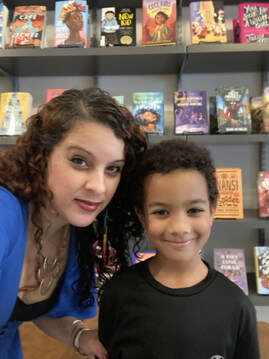 I am a Puerto Rican professional illustrator and writer who works in spurts while raising a family of 6 with my husband. The No Boy, Tulio, is my fourth kid. And yes, he still has big emotions, he still works to communicate, and he still stutters, which can impact his speed of communication. With a family this big, there are many stories to document and share. It's not only important for us, but to the families and kids who can relate, especially those of us who do not often see ourselves in books. My goal is to ensure that my kids and others like them are represented in color, culture, and communication through art and writing. You can follow me on my instagram. Library day was a big deal in my family when I was a kid. We’d walk in with empty paper bags from the grocery store, I’d fill them up in the children’s section, and then carefully carry them out so they wouldn’t tear from the weight. I still remember how amazing it was to go home feeling rich in unread stories. I loaded those bags with all sorts of books, but my favorites were by Beverly Cleary and Judy Blume, like so many of my peers. Back in my room, I’d spend countless hours absorbed in the lives of their characters, wishing that I was friends with them, playing the same games, living in their neighborhoods, and going to their schools. Their daily struggles and challenges became my own, along with their triumphs and victories. I savored the moments that I was transported into their worlds before I was jolted back into my own. It wasn’t that my life was terrible in any way. It just felt so . . . ordinary. Even as a Pakistani-American Muslim child of immigrants growing up in a diverse suburb of Washington, DC, who felt different than those around me, I considered myself far from special. My life was divided between school friends, neighborhood friends, and family friends, with little overlap. I didn’t vacation much, go to sleep away camp, have a dog, take piano lessons, or any of the other things that seemed to make other kids’ lives more exciting than mine. Instead, I played make-believe games about running away, built forts, had a toolshed converted into a playhouse, and painted pet rocks when I wasn’t reading. I also ate kofta and roti for dinner, heard Urdu news playing on the television, and went to the Islamic center on the weekends. As a child writer (which I was, although I never dared to call myself that!) I filled pages with tales about pirates, intergalactic adventures, knights and castles, and stories inspired by popular television shows involving superheroes and stunt actors. I didn’t write about my own life, my neighborhood, or the things that made up my unexciting days in my unexceptional life. And the idea of writing about my family? No way! Who would be able to relate to my experiences? Who would understand the way my family worked, along with our traditions, foods, language and more? We weren’t like the families of Ramona or Margaret, or the other kids I read about. Coming from that mindset, it still amazes me that all these years later I’m writing about a Pakistani American Muslim girl in my Zara’s Rules series. The books mostly take place in her home and neighborhood, with a diverse group of neighbors based on my own, and an extended family inspired by mine. But what I understand now as an adult is that what we see as small or mundane moments now, feel a lot bigger when you’re a kid, and that there is so much beauty, fun, discovery, and growing in those daily struggles and victories I adored reading about when I was younger—and love to write about now. When I started my children’s writing career over twenty years ago, beginning as a writer-for-hire for various series, then making my way over to trade publishing and starting with picture books, I still couldn’t let myself dream that I would ever write something like Zara’s Rules. It’s a series that celebrates being a kid, creativity, and friendship. It’s all about antics: trying to break a Guinness World Record, creating a wagon-based business to earn needed funds, saving a staycation by turning into a camp, and more. There are failures and triumphs, all on a kid-sized scale. But it’s also about an ordinary girl like me and my kids. A girl who goes on bike rides, plays kickball, and watches her little brother, and also hears Urdu, eats paratha, and celebrates Eid. She is relatable and charming in every way because of who she is, not in spite of it. I owe a tremendous debt to Beverly Cleary and Judy Blume, for teaching me that the lives of ordinary girls are fascinating to other kids, and for showing me that families and friendship can be messy and complicated but no less wonderful. I didn’t need for the characters I read about to be exactly like me in order to wish I was their friend, I just needed them to feel real. And it brings me endless joy to know that readers are connecting with my Zara and wishing they lived on her street as they get to escape into her world for a little while, one book at a time. Hena Khan is a Pakistani American writer. She is the author of the middle grade novels Amina’s Voice, Amina’s Song, More to the Story, Drawing Deena, and the Zara’s Rules series and picture books Golden Domes and Silver Lanterns, Under My Hijab, and It’s Ramadan, Curious George, among others. Hena lives in her hometown of Rockville, Maryland, with her family. You can learn more about Hena and her books by visiting her website at HenaKhan.com or connecting with her @HenaKhanBooks.
Headshot photo credit: Havar Espedal Aya Khalil: Hello and salam! I am SO thrilled to interview you today for Kidlit in Color's blog. I read an advanced copy of Salat in Secret, and wow! What a stunning picture book. Can you briefly tell readers what your newest picture book is about in your own words? Jamilah Thompkins-Bigelow: Wa Salaam Aya and thank you so much! Salat in Secret is the story of Muhammad who receives a salat/prayer rug on his seventh birthday, the age when young Muslims are encouraged to observe their five daily prayers. He wants to observe all of his salat prayers on time. However, one occurs during the school day and he’s too shy to ask for a place to pray. AK: I love this book for so many reasons. First, my son is seven years old and his name is Muhammad! Reading this reminded me so much of him. It also reminded me of my younger self. There were many times growing up where I would feel embarrassed of praying in public. But my parents always did. In fact, I remember one time my dad prayed in a coat closet at a restaurant and the police were called. Something similar happens in this book, would you like to explain to readers a little about why you put that part, and also the mean lady (we're all familiar with her) who presumably called them? JTB: The police scene in the book occurs when Muhammad’s dad is praying on the sidewalk and a woman calls police officers over. The police stand and watch and it is a scary scene for both Muhammad and his dad. It’s loosely based on something my father told me about when he was working as an ice cream man. Another ice cream man, an Iraqi immigrant, got out and prayed on the sidewalk in the middle of his work day and police were called on him. They watched and threatened him and then questioned him afterward. The man was crying when he told my father this story and he kept repeating “why” because he couldn’t make sense of it. I included this scene because part of the fear of making our obligatory prayers is the criminalization of Muslims and our faith. This is always in the background for us. Muhammad’s fears about asking about salat aren’t unfounded. There are always people like the “mean lady” in the book who see our very existence as needing policing. It takes a real act of bravery to pray anyway. AK: Hatem Aly does it again with his stunning illustrations! What is your favorite spread or page? For me, that sunset spread with the ice cream truck took my breath away. JTB: Honestly, that sunset spread is such a brilliant work of art that I have to agree with you. It’s my fave! I love that and so many of the elements that Hatem brings to the work. I am particularly enamored with the salat rug end papers because they are so intricate and beautiful and I enjoy the way they open up like actual rugs. AK: What do you hope kids who are Muslims take away from this book? What about kids and adults of other faiths? JTB: I hope Muslim kids feel seen and that they learn that they are entitled to ask for what they need to practice their faith. Kids should know their voices are powerful even when their voices shake. Speaking up is bravery. I’m hoping that readers of other faiths (or no faith) see that too. That they can and should ask for what they need to be comfortable in the school space and to be empathetic when others are voicing needs that may be unfamiliar to them too. AK: You dedicated this book to your Dad (Allah yerhamo). Is there a reason for this, was he an inspiration while writing this book? JTB: Ameen, thank you. I was inspired to write this book a few weeks after my father passed away. While I was processing my emotions of grief, I also found myself feeling a profound sense of gratitude that I had had a father like him to grieve. I looked back and thought about his life and the many joyful memories I shared with him. I was a true daddy’s girl and I remembered the fun we had working on his ice cream truck and the way we would stop and find places to pray. I remembered how proud and unapologetic he was as a Muslim, and I thought about how much that impacted my sense of self. I wanted to put a father like that into a book. Meanwhile, my youngest child was turning seven. I was thinking about what gifts to get him, and a salat rug occurred to me because of the spiritual importance of his age. I thought about how excited my father would have been if he could see that, and I had this story. Photo Credit:: Michael E. Gray
AK: How long did it take for you to write this? It also was preempted! Do you want to talk a little about that for those unfamiliar with a pre-empt? JTB: This may be the fastest I’ve ever written a picture book. I wrote a first draft in one sitting. Once I had the story it was itching to get out and I couldn’t do anything else. It just flowed out of me and my pen had to keep up. After a couple of weeks of working on it, I felt it was ready for critiques and then my agent submitted it to multiple editors. It was then preempted by Ann Kelley at Random House Studio within days. A preempt is when an editor basically takes a book off the table for other editors, but they have to do this quickly – before other editors have a chance to make an offer. If an editor wants a book badly enough and thinks there might be competition, they can offer a deal strong enough to convince an agent and author to not let other editors offer on it and prevent a possible auction. AK: After you announced this book, I remember someone asked his followers where was the most interesting place everyone has prayed at. I have prayed at college staircases and changing rooms. How about you and your family? JTB: Probably the funniest place was during our family vacation last year. We found a patch of grass near a body of water in a parking lot at Disney World. It was kind of secluded so we thought we’d found a good spot. My husband was beginning to lead and I turned around and noticed there were signs behind us saying to beware of alligators. I hollered and we bolted out of there. AK: 😂😂 That is hilarious. I recently read your newly released middle grade, Grounded, that you co-wrote with three incredible authors. I absolutely love it. Not only was it hilarious (I read it on the airplane and was giggling so hard), but the friendship theme is so great. What was it like co-writing a book and what was your favorite part about writing it? JTB: Co-writing was such a nice break from the usually solitary work of writing. We were constantly sharing new ideas and surprising each other with funny things to add. More importantly for me, it helped build up my confidence as an MG writer because this is a relatively new genre for me. The positive and almost-instant feedback made this project incredibly special as a developing MG writer. AK: Any tips for aspiring authors? JTB: Yes, read, read, read your genre. Then, read some more.Books are the best class you’ll ever take. The other is to not back down from telling the story you want to tell. Be unapologetically you in your books. AK: Where can readers find you and your books? Please follow me on Twitter: https://twitter.com/jtbigelow and on Instagram: https://www.instagram.com/authorjamilah/ And visit my website: https://jamilahthewriter.com |
Archives
July 2024
Categories
All
|
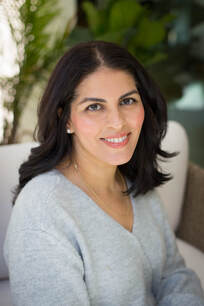
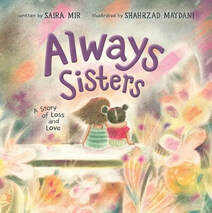
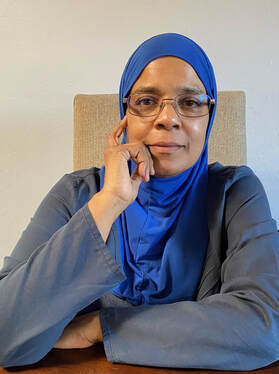
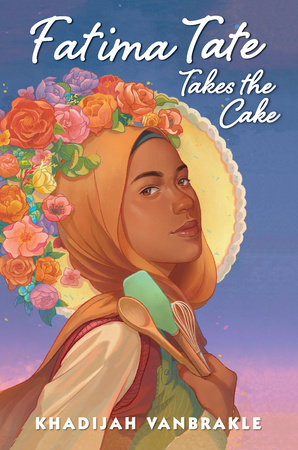
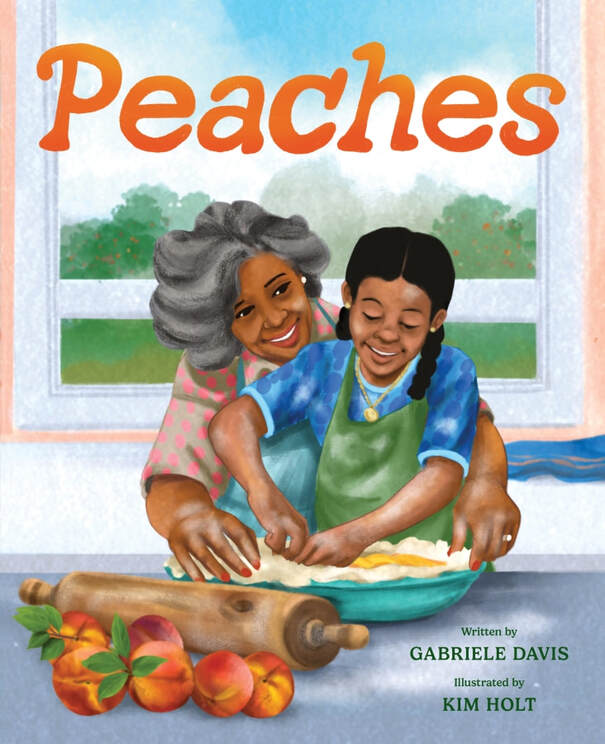
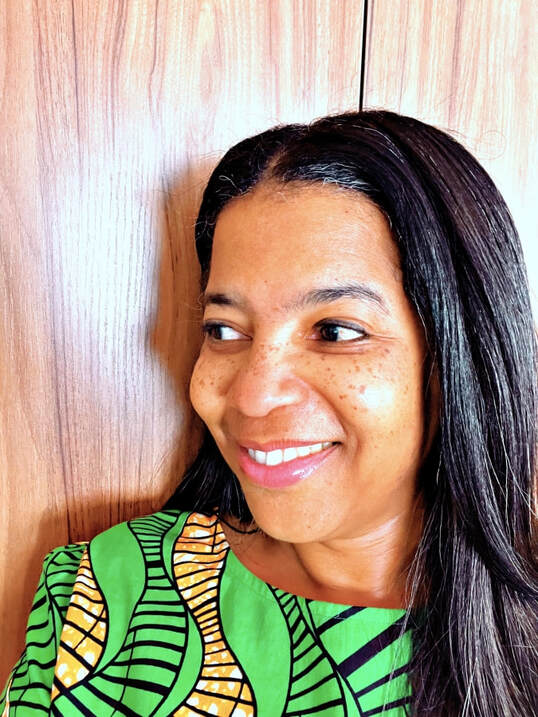

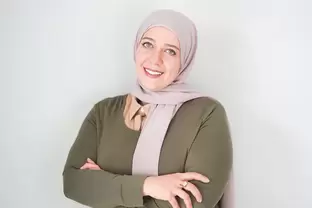
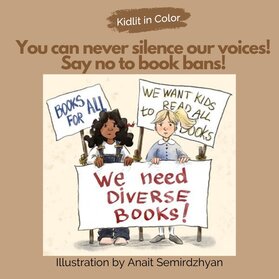
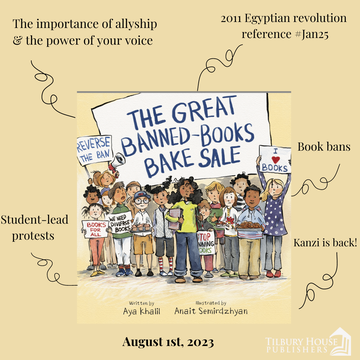
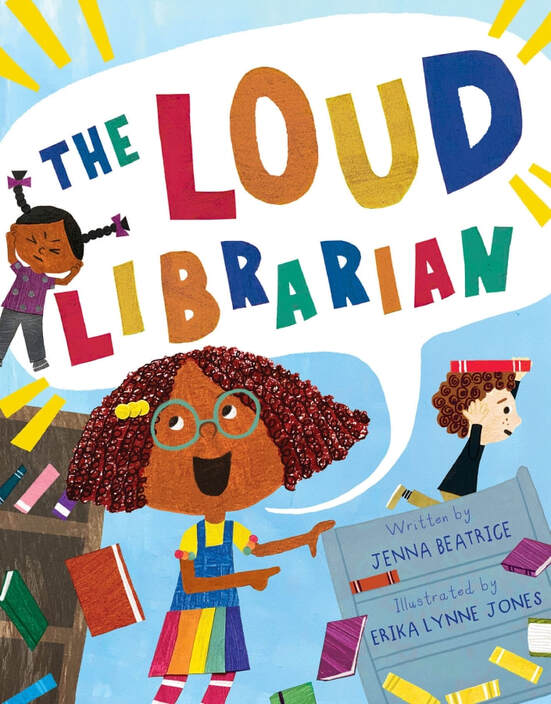
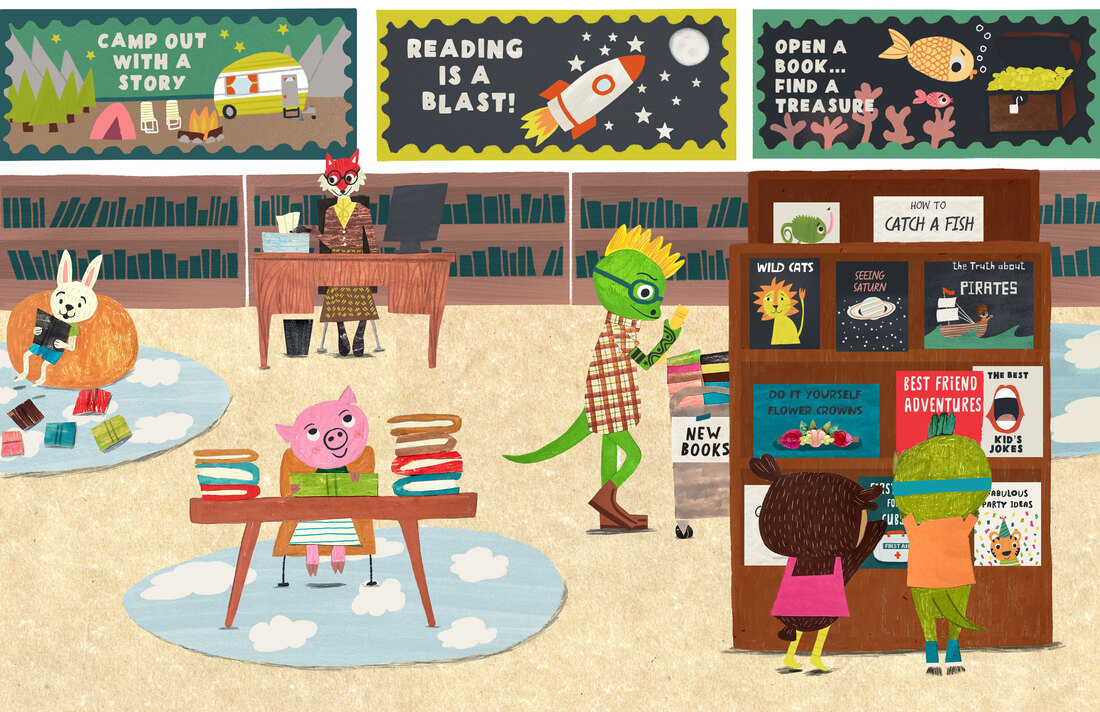
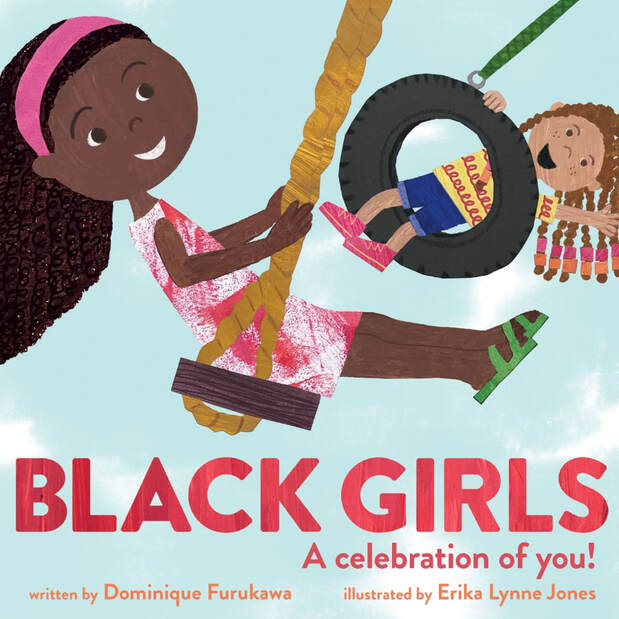
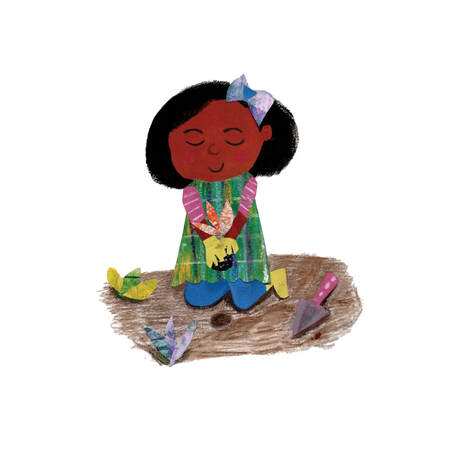
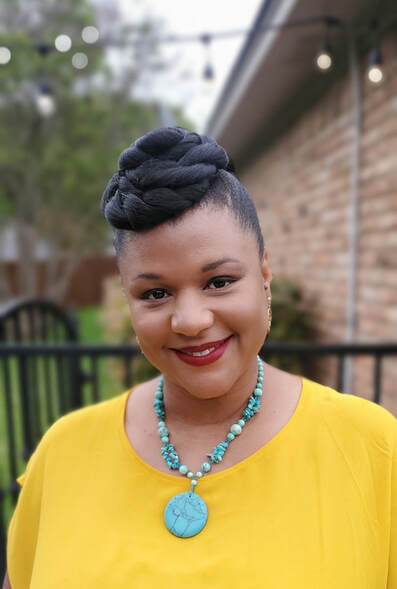
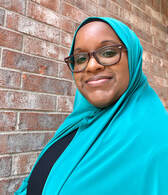
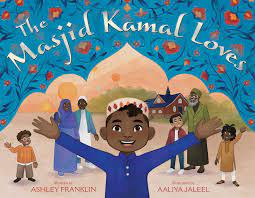
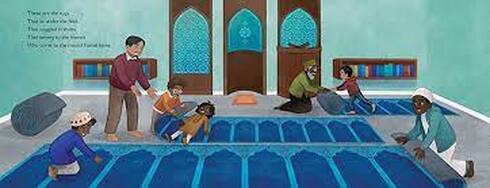
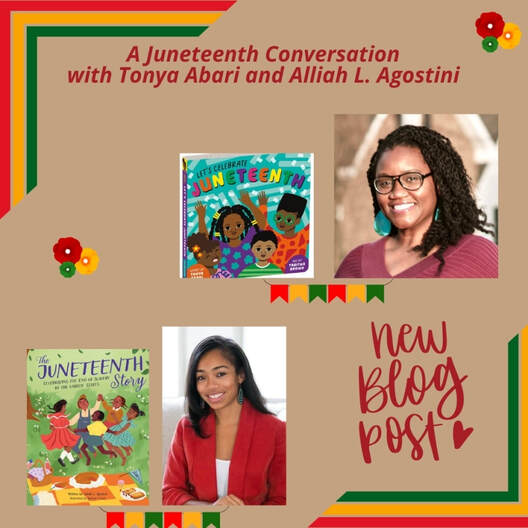
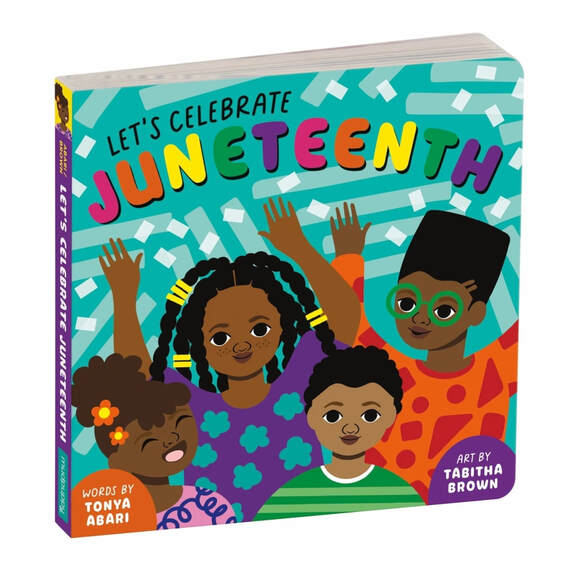

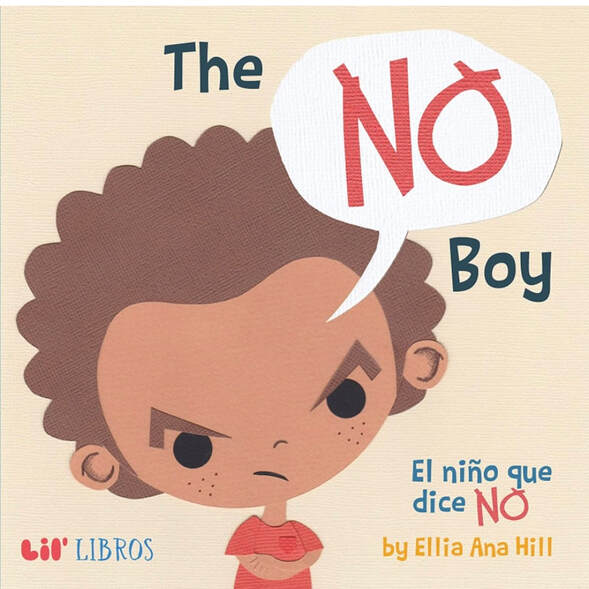
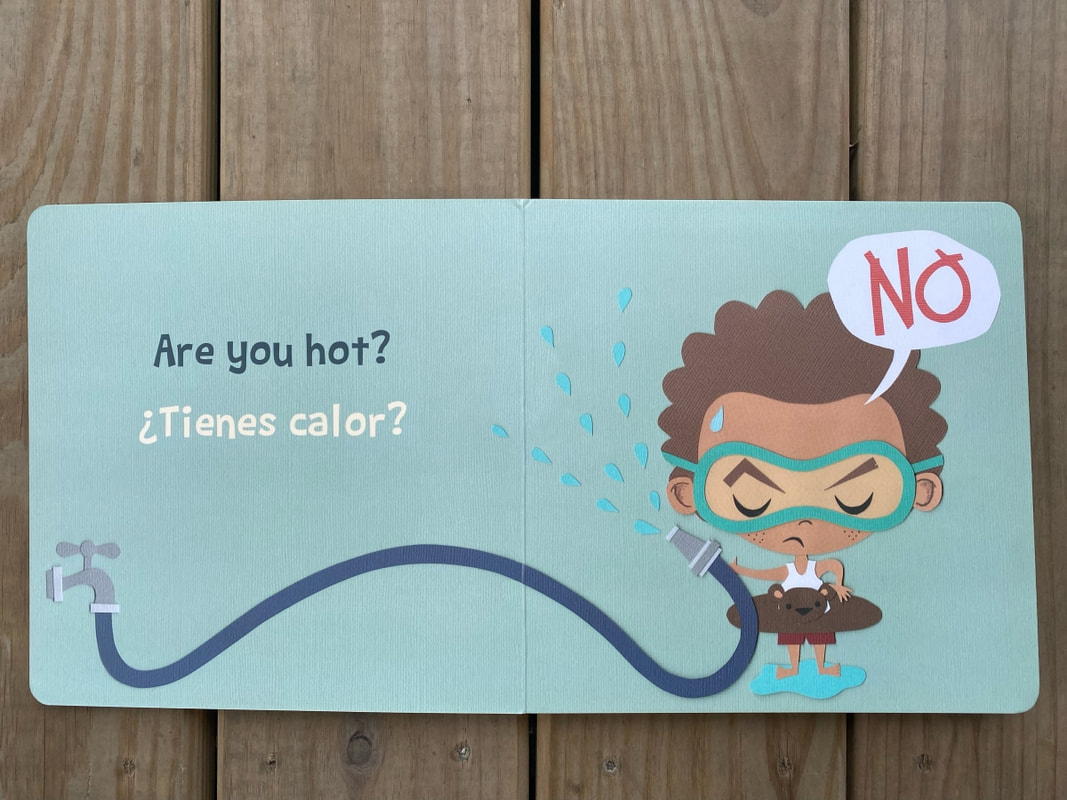
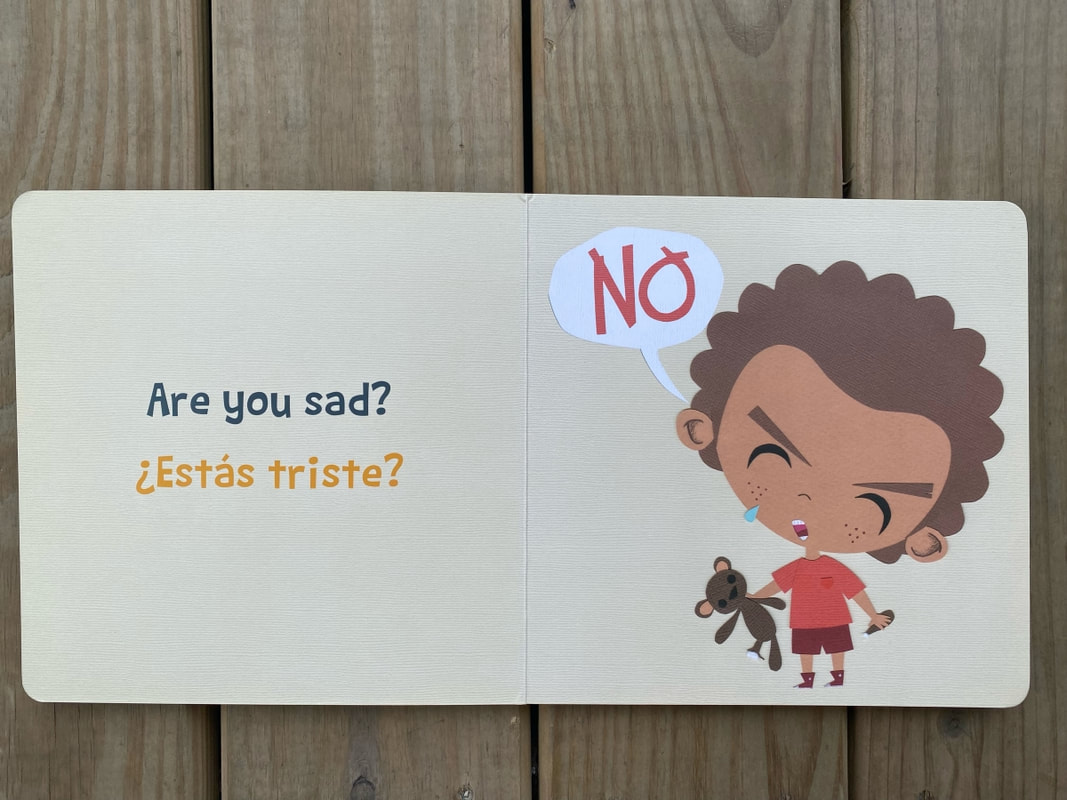
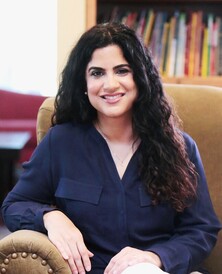
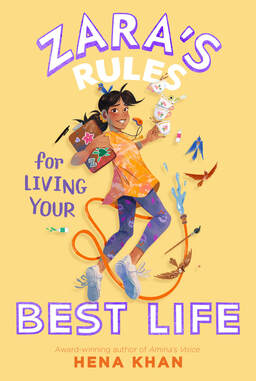
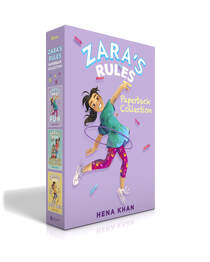


 RSS Feed
RSS Feed



